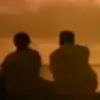Thankyou for your responses
I had let it go for one extra day since many were searching
The correct answer is The Yavanarajya inscription, also called the Maghera Well Stone Inscription (near Mathura)
The inscription dating to 40-80 BCE (116th year of Yavana rule) was by a merchant (Virbala) who was the son of Brahmana Ghosadatta of Maitreya clan. It stated that the well and tank is of Ahogani, the mother of the merchant Virabala, who was the son of Ghosadatta, a Brahmana of the Maitreya clan (gotra), with [her] son Virabala, daughter-in-law Bhaguri, and grandsons Suradatta, Rsabhadeva, and Viraddata.
Unlike most Sanskrit inscriptions of its time, this was in pure Sanksrit. and was inscribed on the 30th day of 4th month of winter months. Gérard Fussman the renowned epigraphist, understands that the fourth winter month is Falgun and the 30th day of that is the Holika dehen.
Unfortunately none of the participants could answer it correctly. The closest was Bhavna @Bhavisweet03 mentioning it as " Yavanarajya inscription of Nashik" while getting the name correct but got content, place and timing wrong.
Since no one could get it correctly hence we are giving her this one
Edited by FlauntPessimism - 1 years ago































